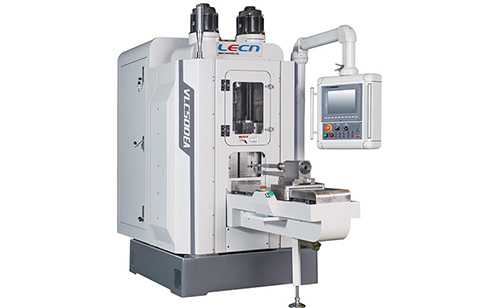What is a Vertical Rolling Machine, and How Does it Work?
In the world of industrial machinery, the Vertical Rolling Machine stands as a remarkable innovation that has transformed various industries by streamlining the process of rolling metal sheets. With its advanced technology and versatile capabilities, this machine has become an indispensable tool in metalworking, contributing significantly to the efficiency and precision of various manufacturing processes.

Introduction to Vertical Rolling
A Vertical Rolling Machine, also known as a Vertical Plate Rolling Machine or simply a Rolling Mill, is a mechanical device designed for bending and shaping metal plates and sheets. It is a key player in metal fabrication, particularly in industries such as construction, automotive manufacturing, shipbuilding, and aerospace, where the need for precision and consistency in metalwork is paramount.
How it Works
The operation of a Vertical Rolling Machine revolves around a set of rollers that exert controlled pressure on a metal sheet. The primary components of this machine include:
Upper Roll: Positioned above the metal sheet, the upper roll is responsible for applying downward force on the material. It can move vertically, allowing for the adjustment of pressure and thickness.
Lower Rolls: These are the two bottom rolls, situated beneath the metal sheet. They rotate and create a bending force, shaping the metal according to the desired curvature.
Side Rolls: Some Vertical Rolling Machines incorporate side rolls that provide additional support during the rolling process, ensuring uniform bending and reducing the risk of deformities.
The Rolling Process
The operation of a Vertical Rolling Machine involves a sequence of precise steps:
Material Preparation: The metal sheet to be rolled is placed horizontally on the machine's bed.
Adjustment: The operator sets the desired thickness and curvature by adjusting the position of the upper roll and side rolls.
Rolling: The machine's hydraulic system or mechanical mechanism is engaged, causing the upper roll to descend and the lower rolls to rotate, exerting pressure on the metal sheet.
Control and Monitoring: During the rolling process, operators closely monitor the progress to ensure that the metal sheet conforms to the required specifications.
Final Product: Once the rolling is complete, the metal sheet emerges with the desired curvature, ready for use in various applications.
Applications of Vertical Rolling Machines
Vertical Rolling Machines find extensive use across a wide range of industries due to their versatility and efficiency. Here are some notable applications:
1. Metal Fabrication
In metal fabrication, these machines are employed to create curved and rolled components used in structures, machinery, and architectural elements. They can shape metal sheets into cylinders, cones, and various other forms with precision.
2. Shipbuilding
The shipbuilding industry relies on Vertical Rolling Machines to create curved sections and plates for constructing ship hulls. This ensures the structural integrity and durability of vessels, even in challenging marine conditions.
3. Automotive Manufacturing
Automotive manufacturers use Vertical Rolling Machines to bend and shape metal parts for vehicles. From exhaust pipes to chassis components, these machines play a crucial role in producing high-quality automotive parts.
4. Aerospace Industry
In aerospace engineering, precision is paramount. Vertical Rolling Machines are used to manufacture curved components for aircraft, ensuring safety and aerodynamic efficiency.
5. Construction
Vertical Rolling Machines are employed in construction projects to shape metal beams and columns, which are used in the creation of durable and load-bearing structures.
Advantages of Vertical Rolling Machines
The adoption of Vertical Rolling Machines offers several advantages to industries:
Precision
These machines provide exceptional precision in bending and shaping metal sheets, ensuring that the final product meets exact specifications.
Efficiency
Vertical Rolling Machines enhance efficiency by reducing manual labor and increasing the speed of metal sheet processing.
Versatility
Their ability to work with a variety of metals, including steel, aluminum, and stainless steel, makes Vertical Rolling Machines versatile and adaptable to various manufacturing needs.
Cost-Effective
By minimizing material wastage and reducing the need for secondary processing, these machines contribute to cost savings in production.
Conclusion
In the realm of industrial machinery, the Vertical Rolling Machine stands as a testament to innovation and efficiency. Its ability to shape metal sheets with precision has revolutionized industries, from construction to aerospace. As industries continue to evolve, the Vertical Rolling Machine will remain a cornerstone of metalworking, driving progress and excellence in manufacturing processes.
Previous: Boost Your Efficiency with Plating Machines and Wrapping Machines
Next: Is the Latest Hardfacing Machine (2023) Your Industry's Missing Puzzle Piece?
If you are interested in sending in a Guest Blogger Submission,welcome to write for us!




Comments
0